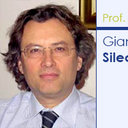Laparoscopic transhiatal treatment of large epiphrenic esophageal diverticulum.
Mots clés
Abstrait
BACKGROUND
Epiphrenic diverticulum is an uncommon disorder of the distal third of the esophagus. We report the case of a 73-year-old woman with a large symptomatic esophageal epiphrenic diverticulum, diffuse nonspecific esophageal dysmotility, and a hiatal hernia.
METHODS
Surgery was indicated by the patient's symptoms, the size of the diverticulum (maximum diameter 10 cm), and the associated esophageal motor disorder. Preoperative study included barium swallow, upper gastrointestinal endoscopy, and esophageal manometry. A laparoscopic transhiatal diverticulectomy associated with a Heller myotomy, hiatoplasty, and a Dor's fundoplication was carried out. The overall operative time was 230 minutes.
RESULTS
No intraoperative complications occurred. Gastrografin swallow performed on postoperative day 4 did not show any signs of leakage from the staple line. The postoperative hospital stay was 5 days. The patient was readmitted 10 days after discharge complaining of fever and chest pain. A new Gastrografin swallow demonstrated a small leak from the staple line successfully treated with 3 weeks of total enteral nutrition.
CONCLUSIONS
The laparoscopic approach to epiphrenic diverticulum is feasible. Postoperative Gastrografin swallow is not 100% sensitive in detecting small suture-line leaks if a preexisting esophageal motility disorder is present. In case of late postoperative fever and pleural effusion, a suture-line leak should be suspected. Conservative management of the small suture-line leak should be considered as an effective therapeutic option.



